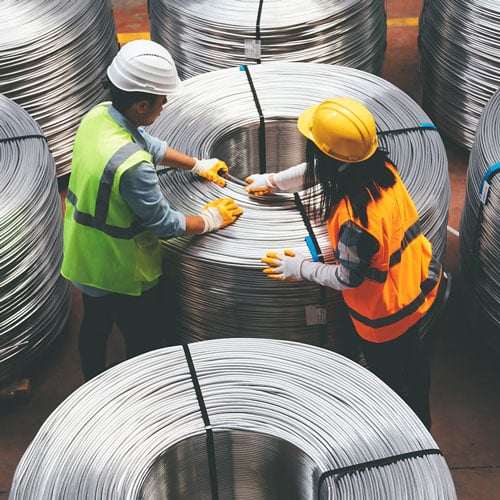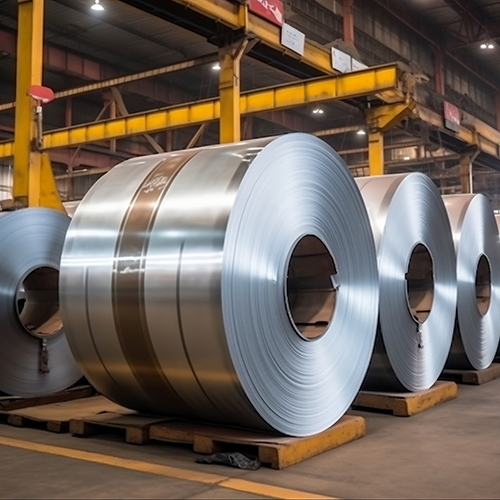Heavy Industrial and Metals Market
Heavy industrial and metals manufacturing is complex, with little to no room for error. It’s an industry that presents unique challenges — challenges that require unique and tailored solutions.
More Efficient Manufacturing Operations
For heavy industrial and metals manufacturers, trying to juggle multiple partners to support production and business operations can lead to delays, compatibility problems and frustration. Coordination between buyers, vendors, agents and suppliers leads to finger-pointing, higher costs and rush shipments. GO2 Partners’ industry-leading service lines are the all-in-one solution your company needs to succeed.
For every challenge your business faces, there’s an expert at GO2 ready to deliver the right solution.

Solutions to Your Business Challenges:
Reliable Tag and Label Solutions
Performance and reliability are critical for your operation. GO2 offers a variety of specialized tracking, tagging and labeling solutions. More than just labels, we offer the latest high-technology solutions, including high-temp, thermal transfer and direct thermal solutions, and RFID.
You can access critical information at your fingertips using our RFID label technology. With RFID, you’ll automate error-prone manual processes during transportation and empower your inventory and material tracking.
Protective Packaging Solutions
GO2 provides poly wraps, shrink wrap and banding packaging to keep your important materials safe during transit. Let’s talk about your needs and match them with the right packaging solution.
Operational Visibility and Tracking Solutions
Your business runs on shipping and supplies. You need to ensure that you have the correct materials and that they arrive on time and intact. Our tracking and chain-of-custody services support your material traceability and identity requirements through comprehensive chain-of-custody analysis and durable tagging.
Printing and Graphic Design Solutions
Every delivery is an opportunity to build your brand. Work with GO2 to elevate the graphic elements of your packaging and promote brand awareness through unique and eye-catching designs. Our experienced printing and graphic design teams can work with you to improve your company’s brand recognition and turn every contact into a buyer’s touchpoint.

Customer Success Stories
See how GO2 helped a metal manufacturer with asset tracking.
Don’t Wait to Increase Efficiency
Do you want to learn more about how GO2 can assist your business? Schedule a consultation today to meet with one of our experts. Our mission is to be the easiest company to do business with, so don’t wait to learn how we can help.
